Best Places To Travel In Nepal
1.Kathmandu

Nepal is a landlocked country located in South Asia, nestled between India and China. It is renowned for its diverse landscapes, ranging from the lowland Terai plains to the towering peaks of the Himalayas, including Mount Everest, the highest point on Earth. Nepal is rich in cultural heritage, with a blend of Hinduism and Buddhism influencing its traditions, festivals, and daily life.
Kathmandu, the capital city, is situated in the Kathmandu Valley. It is a vibrant and historical city known for its ancient temples, palaces, and bustling marketplaces. Kathmandu is a gateway for trekkers and mountaineers heading to the Himalayas and is celebrated for its unique blend of traditional architecture and modern urban life. Key landmarks include the Swayambhunath Stupa (also known as the Monkey Temple), the Durbar Squares, and the Pashupatinath Temple.
Best Months to Visit
The best time to visit Kathmandu, Nepal, is during the spring (March to May) and autumn (September to November) seasons.
Spring (March to May): This period offers pleasant weather with mild temperatures and clear skies, making it ideal for sightseeing and outdoor activities. The blooming rhododendrons add vibrant colors to the landscape.
Autumn (September to November): This is another excellent time to visit Kathmandu. The weather is generally clear and stable, providing great conditions for exploring the city and enjoying the surrounding natural beauty.
Open Days And Timing
In Kathmandu, many attractions have specific opening days and hours, but they can vary slightly depending on the site and time of year. Here are some general guidelines for popular attractions:
Swayambhunath Stupa (Monkey Temple):
- Opening Hours: Daily from 7:00 AM to 6:00 PM
Pashupatinath Temple:
- Opening Hours: Daily from 4:00 AM to 12:00 PM and from 5:00 PM to 7:00 PM. Non-Hindus are allowed only in the outer courtyard.
Boudhanath Stupa:
- Opening Hours: Daily from 6:00 AM to 7:00 PM
Kathmandu Durbar Square:
- Opening Hours: Daily from 10:00 AM to 5:00 PM
Patan Durbar Square:
- Opening Hours: Daily from 10:00 AM to 5:00 PM
Bhaktapur Durbar Square:
- Opening Hours: Daily from 7:00 AM to 6:00 PM
Ticket
Swayambhunath Stupa (Monkey Temple):
- Ticket Price: Around NPR 200 (about USD 1.50) for foreigners.
Pashupatinath Temple:
- Ticket Price: Around NPR 1,000 (about USD 7.50) for foreigners. Non-Hindus can only access the outer courtyard.
Boudhanath Stupa:
- Ticket Price: Around NPR 400 (about USD 3.00) for foreigners.
Kathmandu Durbar Square:
- Ticket Price: Around NPR 1,000 (about USD 7.50) for foreigners.
Patan Durbar Square:
- Ticket Price: Around NPR 1,000 (about USD 7.50) for foreigners.
Bhaktapur Durbar Square:
- Ticket Price: Around NPR 1,500 (about USD 11.00) for foreigners.
Near By Location
1. Bhaktapur:
- Distance: About 12 km (7.5 miles) from Kathmandu.
- Highlights: Known for its well-preserved medieval architecture, historic temples, and vibrant cultural festivals. Bhaktapur Durbar Square is a UNESCO World Heritage Site with stunning palaces, courtyards, and temples.
2. Patan (Lalitpur):
- Distance: Approximately 8 km (5 miles) from Kathmandu.
- Highlights: Famous for its artistic heritage, Patan Durbar Square features intricately carved temples, palaces, and courtyards. The city is renowned for its traditional arts and crafts.
3. Nagarkot:
- Distance: About 32 km (20 miles) from Kathmandu.
- Highlights: A hill station known for its panoramic views of the Himalayas, especially during sunrise. It’s a great spot for hiking and enjoying the scenic beauty of the surrounding landscape.
4. Dhulikhel:
- Distance: Around 30 km (19 miles) from Kathmandu.
- Highlights: Offers spectacular mountain views and a tranquil atmosphere. The town is a good base for trekking and exploring the nearby countryside.
5. Kakani:
- Distance: Approximately 23 km (14 miles) from Kathmandu.
- Highlights: Known for its panoramic views of the Himalayas and pleasant climate. Kakani is a popular spot for day trips and picnics.
6. Changu Narayan:
- Distance: About 20 km (12 miles) from Kathmandu.
- Highlights: Home to Changu Narayan Temple, one of Nepal’s oldest Hindu temples. The temple is situated on a hilltop and offers great views of the surrounding area.
7. Sankhu:
- Distance: Around 17 km (10.5 miles) from Kathmandu.
- Highlights: A traditional Newari village with ancient temples, traditional architecture, and cultural heritage. It offers a glimpse into traditional rural life near Kathmandu.
8. Bungamati and Khokana:
- Distance: Approximately 12 km (7.5 miles) from Kathmandu.
- Highlights: Traditional Newari villages known for their historical architecture, traditional crafts, and cultural practices. Bungamati is famous for its wooden carvings and Khokana for its mustard oil production.
2.Om Parvat and Himalayas
Om Parvat and Himalayas
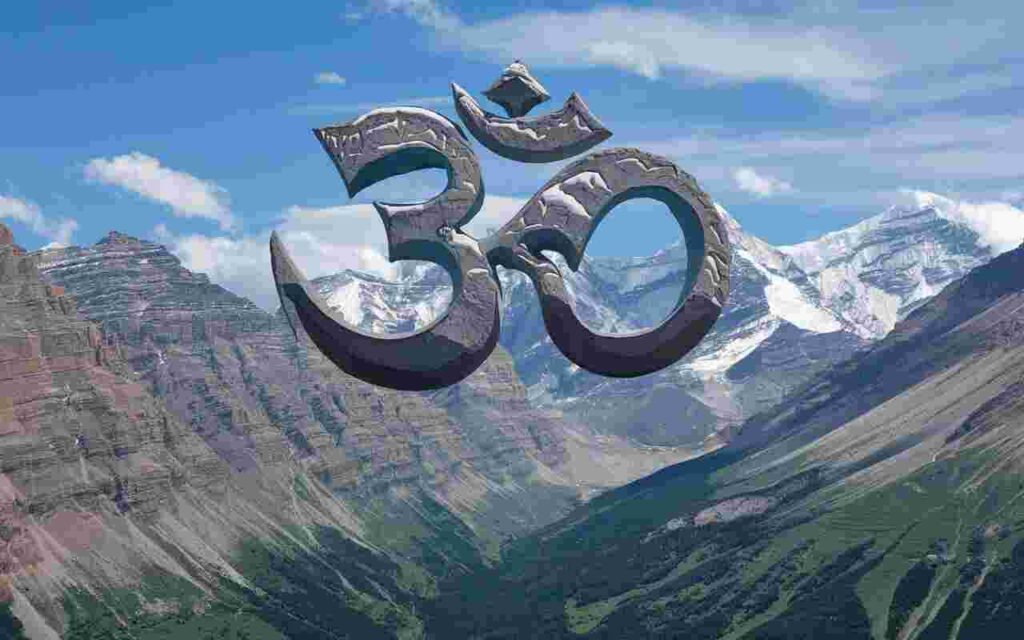
Om Parvat, located in the Himalayas along the border between Nepal and Tibet, is a striking peak known for its distinctive shape resembling the sacred syllable “Om.” It stands as part of the Kailash Range and holds deep religious significance in Hinduism and Buddhism, being closely associated with Mount Kailash, a major pilgrimage site.
The Himalayas, extending across five countries—Nepal, India, Bhutan, China, and Pakistan—are the world’s highest mountain range, home to some of the planet’s most iconic peaks, including Mount Everest and K2. This majestic range is characterized by its breathtaking landscapes, diverse ecosystems, and rich cultural heritage, making it a popular destination for trekkers, climbers, and spiritual seekers.
Best Months to Visit
The best time to visit the Himalayas and Om Parvat is generally during the pre-monsoon (spring) and post-monsoon (autumn) seasons. Here’s a more detailed look:
Spring (March to May):
- Weather: The weather is generally clear, with moderate temperatures and blooming rhododendrons.
- Advantages: Good visibility for trekking and climbing, and the landscape is lush and vibrant.
Autumn (September to November):
- Weather: Clear skies, stable weather, and mild temperatures.
- Advantages: Ideal conditions for trekking, as the trails are dry and the views are unobstructed.
Avoid the Monsoon (June to August): The monsoon season brings heavy rains, which can lead to landslides, slippery trails, and poor visibility.
Winter (December to February): The weather can be extremely cold, with heavy snowfall in high altitudes, making travel and trekking challenging. However, it can be a good time for lower-altitude treks and for those looking to experience snow-capped peaks.
Summer (June to August): This is the monsoon season, and while it can be less crowded, the heavy rains can make trekking conditions difficult and increase the risk of landslides.
Open Days And Timing
Himalayas:
- Access: The Himalayas are open year-round, but conditions vary greatly with the seasons.
- Best Seasons: As mentioned, spring (March to May) and autumn (September to November) are the best times for trekking due to favorable weather conditions.
- Permits: Some trekking routes and regions require permits or entry fees, which you should arrange in advance.
Om Parvat:
- Access: The area around Om Parvat is accessible year-round, but the weather and road conditions can be challenging, particularly in winter and the monsoon season.
- Best Seasons: Spring and autumn are also ideal for visiting Om Parvat. During these times, the weather is more stable, and the trekking conditions are more favorable.
- Permits: As Om Parvat is in a restricted area, you will need special permits to visit. These can usually be obtained through trekking agencies or local authorities.
Ticket
When visiting the Himalayas and Om Parvat, there are different types of permits and fees that may apply:
Himalayas:
- Permits: Depending on the specific region you plan to visit, you might need various permits. For example:
- TIMS Card (Trekkers’ Information Management System): Required for many trekking routes in Nepal.
- ACAP (Annapurna Conservation Area Permit): Required for trekking in the Annapurna region.
- SAG (Sagarmatha National Park Entry Permit): Required for the Everest region.
- Fees: Fees for these permits vary. For instance, the TIMS Card is approximately NPR 2,000 (USD 15) for individual trekkers, while the ACAP permit costs around NPR 2,000 (USD 15) and the SAG permit is about NPR 3,000 (USD 22).
- Permits: Depending on the specific region you plan to visit, you might need various permits. For example:
Om Parvat:
- Permits: Since Om Parvat is in a restricted area, you will need special permits. These include:
- Restricted Area Permit: Required for areas near the Tibetan border, including Om Parvat. The cost and process can vary depending on the exact location and the agency handling your permits.
- Special Permits: For visiting remote or sensitive areas, you may also need permits from local authorities or additional permissions if traveling through areas near the border.
- Permits: Since Om Parvat is in a restricted area, you will need special permits. These include:
Near By Location
Near Om Parvat:
Mount Kailash:
- Distance: About 30 km from Om Parvat.
- Highlights: A sacred peak for Hindus, Buddhists, Jains, and Bonpos. Pilgrims perform a circumambulation of the mountain, a significant spiritual journey.
Lake Manasarovar:
- Distance: Approximately 90 km from Om Parvat.
- Highlights: A high-altitude lake revered in Hinduism and Buddhism. It is considered a sacred site and is often visited alongside Mount Kailash.
Tibet (China):
- Highlights: Close to the Tibetan border, you can explore areas such as Lhasa, which offers stunning Tibetan culture and monasteries.
Near the Himalayas:
Nepal:
- Kathmandu Valley:
- Highlights: The capital city, known for its cultural heritage, historical sites, and vibrant atmosphere.
- Pokhara:
- Distance: About 200 km from Kathmandu.
- Highlights: Known for its stunning lake, adventure sports, and views of the Annapurna Range.
- Kathmandu Valley:
India:
- Shimla and Manali (Himachal Pradesh):
- Distance: About 300-350 km from Delhi.
- Highlights: Popular hill stations with beautiful landscapes, adventure activities, and colonial architecture.
- Leh-Ladakh (Ladakh):
- Distance: Around 700 km from Manali.
- Highlights: A high-altitude desert region with breathtaking landscapes, Buddhist monasteries, and unique cultural experiences.
- Shimla and Manali (Himachal Pradesh):
Bhutan:
- Paro Valley:
- Distance: About 250 km from the Indian border.
- Highlights: Known for the iconic Tiger’s Nest Monastery and traditional Bhutanese culture.
- Paro Valley:
Sikkim (India):
- Gangtok:
- Distance: About 120 km from the West Bengal border.
- Highlights: A vibrant city with stunning views of Kanchenjunga, Buddhist monasteries, and local markets.
- Gangtok:
3.Bagmati
Bhaktapur
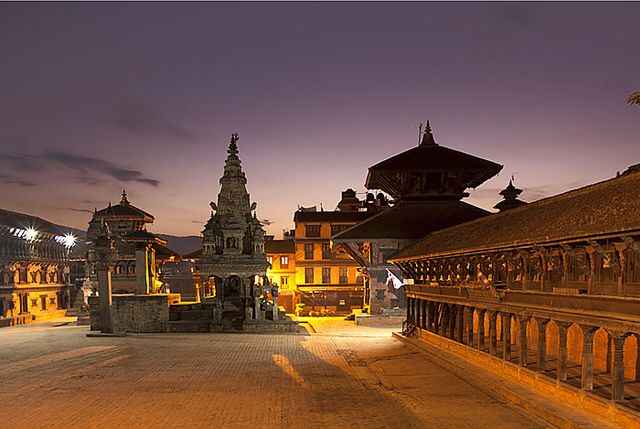
Bhaktapur is a historical city in the Bagmati Province of Nepal, celebrated for its well-preserved medieval architecture and rich cultural heritage. Known as the “City of Devotees,” Bhaktapur is renowned for its vibrant Durbar Square, filled with ancient temples, palaces, and intricate wood carvings. The city’s traditional Newar culture is evident in its festivals, architecture, and daily life, making it a fascinating destination for those interested in Nepalese history and culture.
Bagmati Province is one of Nepal’s seven provinces, encompassing a diverse array of landscapes and cultural landmarks. It includes the Kathmandu Valley, home to the capital city of Kathmandu, as well as historic cities like Bhaktapur and Patan. The province offers a mix of urban vibrancy, ancient temples, and scenic beauty, with attractions ranging from the cultural heritage sites in Kathmandu to the tranquil viewpoints of Nagarkot and Dhulikhel.
Best Months to Visit
The best time to visit Bhaktapur is during the spring (March to May) and autumn (September to November) seasons.
Spring (March to May): The weather is pleasantly warm, and the city is vibrant with blooming flowers. This is a great time for exploring the city’s architecture and outdoor attractions.
Autumn (September to November): The weather is generally clear and mild, with lower humidity and less rainfall, making it ideal for sightseeing and walking around the historic sites.
These seasons offer the most comfortable weather for exploring Bhaktapur’s temples, palaces, and traditional markets. The summer monsoon (June to August) can bring heavy rains, which might affect travel plans, while winter (December to February) can be cold, though still manageable for sightseeing.
Open Days And Timing
In Bhaktapur, many attractions are open daily, but the opening hours can vary. Here are general guidelines for some of the main sites:
Bhaktapur Durbar Square:
- Opening Hours: Daily from 7:00 AM to 6:00 PM.
- Ticket Price: Around NPR 1,500 (about USD 11.00) for foreigners.
Changunarayan Temple:
- Opening Hours: Daily from 8:00 AM to 6:00 PM.
- Ticket Price: Included with the Bhaktapur Durbar Square ticket, but separate entry might be required for some areas.
Bhaktapur’s Temples and Museums:
- Opening Hours: Most are open daily from around 8:00 AM to 6:00 PM.
- Ticket Prices: May vary by site.
Local Markets and Streets:
- Opening Hours: Typically bustling from early morning until evening, with some shops closing around 7:00 PM.
Ticket
Bhaktapur:
- Bhaktapur Durbar Square: The primary attraction, featuring ancient temples, palaces, and courtyards. The entrance ticket for foreigners costs around NPR 1,500 (about USD 11.00).
Bagmati Province:
- Kathmandu Valley Sites: Various attractions within Bagmati Province, such as Swayambhunath Stupa, Pashupatinath Temple, and Boudhanath Stupa, each have their own ticket prices, generally ranging from NPR 200 to NPR 1,000 (about USD 1.50 to USD 7.50) for foreigners.
Near By Location
Kathmandu:
- Distance: About 13 km (8 miles) from Bhaktapur.
- Highlights: The capital city offers a wealth of cultural and historical attractions, including Swayambhunath Stupa (Monkey Temple), Pashupatinath Temple, and Boudhanath Stupa. The vibrant Thamel area is also known for shopping and dining.
Patan (Lalitpur):
- Distance: Approximately 20 km (12 miles) from Bhaktapur.
- Highlights: Known for its well-preserved Durbar Square, Patan offers stunning temples, the Patan Museum, and traditional Newar architecture. It’s a great place to explore local art and craftsmanship.
Nagarkot:
- Distance: About 32 km (20 miles) from Bhaktapur.
- Highlights: Famous for its panoramic views of the Himalayas, including Mount Everest. It’s an excellent spot for sunrise views and hiking.
Dhulikhel:
- Distance: Around 30 km (19 miles) from Bhaktapur.
- Highlights: Offers beautiful Himalayan views, scenic hikes, and a peaceful environment. It’s known for its local culture and nearby Buddhist monasteries.
Changunarayan Temple:
- Distance: About 8 km (5 miles) from Bhaktapur.
- Highlights: An ancient Hindu temple dedicated to Lord Vishnu, known for its historical significance and intricate carvings.
Sankhu:
- Distance: Approximately 20 km (12 miles) from Bhaktapur.
- Highlights: A traditional Newar village with historical temples, including the Bajrayogini Temple, and a unique cultural atmosphere.
4.Gandaki
Pokhara
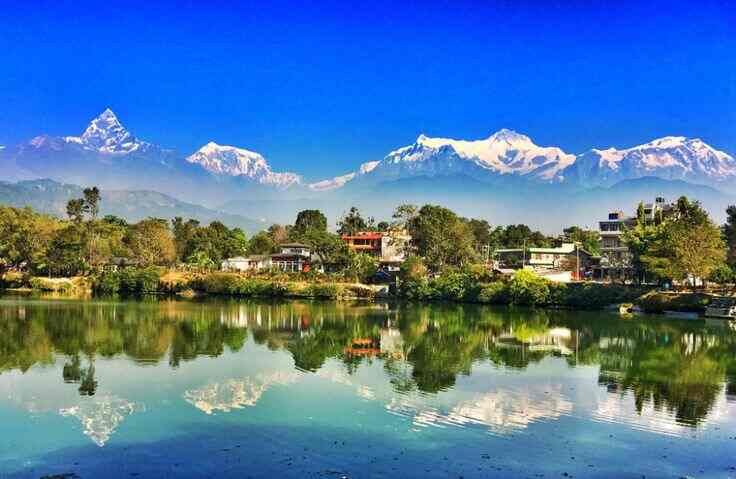
Pokhara is a picturesque city in Gandaki Province, Nepal, known for its stunning natural landscapes, including the serene Phewa Lake and panoramic views of the Annapurna mountain range. It is a popular destination for adventure activities such as paragliding and trekking, as well as for its tranquil lakeside setting and vibrant cultural scene.
Gandaki Province encompasses a diverse range of landscapes, from lush valleys and tranquil lakes to towering Himalayan peaks. It is home to the Annapurna and Manaslu regions, renowned for their trekking routes, and offers a mix of natural beauty, cultural heritage, and outdoor adventure. The province includes key destinations like Pokhara, Bandipur, and Gosaikunda, each contributing to its rich appeal.
Best Months to Visit
Spring (March to May): The weather is warm and pleasant, with clear skies and blooming flowers. It’s an ideal time for trekking, sightseeing, and enjoying outdoor activities.
Autumn (September to November): This period offers stable weather, clear views of the Himalayas, and comfortable temperatures. It’s also a popular time for trekking and exploring Pokhara’s natural beauty.
Winter (December to February): While the temperatures can be cooler, especially in the mornings and evenings, this season offers clear skies and crisp air. It’s suitable for those who prefer fewer crowds and enjoy cooler temperatures.
Monsoon (June to August): The monsoon season brings heavy rainfall, which can lead to landslides and muddy trails. It’s less ideal for trekking and outdoor activities but can be a good time to experience lush green landscapes and fewer tourists.
Open Days And Timing
Phewa Lake:
- Timing: Open throughout the day. Boating typically operates from around 6:00 AM to 6:00 PM.
- Activities: Boating, lakeside walks, and dining at lakeside cafes.
World Peace Pagoda:
- Timing: Generally open from early morning to late afternoon (around 6:00 AM to 6:00 PM).
- Activities: Hiking to the pagoda and enjoying panoramic views.
Devi’s Fall:
- Timing: Open daily from around 7:00 AM to 6:00 PM.
- Activities: Visiting the waterfall and exploring nearby areas.
Gupteshwor Mahadev Cave:
- Timing: Open daily from around 7:00 AM to 6:00 PM.
- Activities: Exploring the cave temple and its surroundings.
Gandaki Province:
Annapurna Region Treks:
- Timing: The trekking routes are accessible throughout the year, but spring and autumn are the most popular seasons. Specific trekking routes may have different access times depending on the local conditions and weather.
Bandipur:
- Timing: Open daily with no specific hours. The best time to visit is during daylight hours to enjoy the views and explore the town.
Gosaikunda:
- Timing: The trekking routes to Gosaikunda are generally open year-round, but the best times to visit are during the spring and autumn seasons. Weather conditions can affect accessibility.
Ticket
World Peace Pagoda:
- Entry Fee: There is generally no formal entry fee, but visitors may pay a small fee for transportation or guided tours.
Gupteshwor Mahadev Cave:
- Entry Fee: Approximately NPR 100 (about USD 0.75) for foreigners.
Devi’s Fall:
- Entry Fee: Generally included in the ticket price for the Gupteshwor Mahadev Cave. Entry might cost around NPR 30 (about USD 0.25) for locals and a bit more for foreigners.
Phewa Lake:
- Boating Fee: Fees vary depending on the type of boat and duration. For example, a rowboat can cost around NPR 500-800 (about USD 4-6) for an hour.
Museum Visits:
- International Mountain Museum: Entry fee is approximately NPR 500 (about USD 4) for foreigners.
- Other Museums: Fees for various museums like the Gurkha Museum or the Pokhara Regional Museum can vary, generally around NPR 100-300 (about USD 1-2.50) for foreigners.
Near By Location
1. Sarangkot:
- Distance: About 8 km (5 miles) from Pokhara.
- Highlights: Known for its spectacular sunrise views over the Himalayas, including Mount Annapurna and Machapuchare. It’s also a popular spot for paragliding.
2. Bandipur:
- Distance: Approximately 70 km (43 miles) from Pokhara.
- Highlights: A charming hilltop town with well-preserved Newar architecture, panoramic mountain views, and a relaxed atmosphere. It’s a great place for cultural exploration and scenic views.
3. Ghandruk:
- Distance: About 32 km (20 miles) from Pokhara.
- Highlights: A picturesque Gurung village known for its stunning mountain views and traditional culture. It’s a popular stop on the Annapurna Circuit trek.
4. Devi’s Fall:
- Distance: Around 2 km (1.2 miles) from Pokhara’s Lakeside area.
- Highlights: A unique waterfall that cascades into a deep, rocky gorge. It’s an interesting spot for visitors, often combined with a visit to the nearby Gupteshwor Mahadev Cave.
5. Tibetan Refugee Camp:
- Distance: Approximately 5 km (3 miles) from Pokhara.
- Highlights: Offers insight into Tibetan culture and crafts. Visitors can purchase Tibetan handicrafts and learn about the refugee community.
6. Rupa Lake and Begnas Lake:
- Distance: About 15-20 km (9-12 miles) from Pokhara.
- Highlights: These serene lakes are less crowded than Phewa Lake and offer beautiful scenery and peaceful surroundings. Ideal for boating and relaxing in nature.
7. Lumle:
- Distance: Around 23 km (14 miles) from Pokhara.
- Highlights: A small village and the starting point for several trekking routes. It provides a glimpse of rural life and easy access to natural beauty.
5.Karnali
Rara Lake
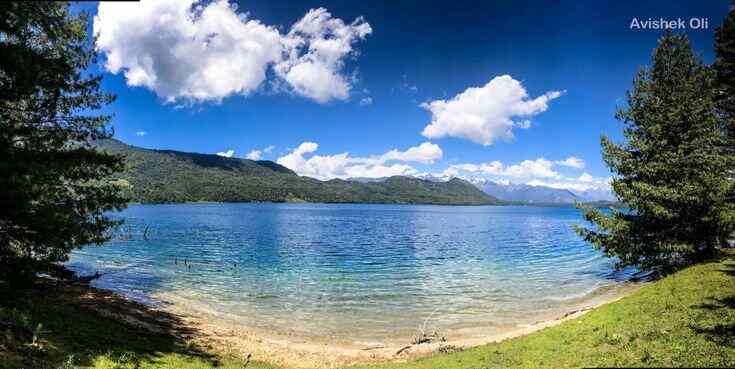
Karnali Province in Nepal is renowned for its remote and rugged landscapes, rich cultural heritage, and natural beauty. The province is characterized by its dramatic terrain, including deep river valleys, high mountain ranges, and traditional villages. It offers unique travel experiences, from trekking and cultural exploration to adventure sports.
Rara Lake is one of the standout attractions in Karnali Province. As Nepal’s largest and deepest lake, it is renowned for its pristine beauty and serene environment. Located within Rara National Park, the lake is surrounded by snow-capped peaks and lush forests, providing a picturesque setting for trekking and nature lovers. Its crystal-clear blue waters and tranquil surroundings make it a popular destination for those seeking peace and natural beauty.
Best Months to Visit
- Spring (April to June)
- Autumn (September to November.
- Summer (July to August)
- Winter (December to February)
Open Days And Timing
Trekking Season:
- Best Time to Visit: Spring (April to June) and autumn (September to November) are ideal due to favorable weather conditions and clear views.
- Monsoon and Winter: The monsoon season (July to August) and winter (December to February) can present challenges such as heavy rainfall, slippery trails, and cold temperatures.
Permits:
- Entry Permit: Visitors need to obtain a TIMS (Trekkers’ Information Management System) card and a National Park entry permit to visit Rara Lake. These permits are generally processed through trekking agencies or local authorities.
Travel Considerations:
- Trekking Duration: The trek to Rara Lake typically takes around 8-12 days, depending on the route and pace.
- Access Points: The trek usually starts from Jumla or Mugu, and travel to these starting points can be affected by weather conditions. Flights or overland transport are used to reach these areas.
Local Facilities:
- Accommodations: There are basic lodges and guesthouses available along the trekking route, but facilities near the lake are limited. It is essential to plan and prepare accordingly.
Visiting Tips:
- Travel Early: Plan your trek in advance and be aware of seasonal weather patterns to ensure the best experience.
- Prepare for Weather: Be prepared for changing weather conditions, especially if traveling outside the peak seasons.
Ticket
Permits Required:
Rara National Park Entry Permit:
- Cost: Approximately NPR 1,000 (about USD 7.50) for foreigners.
- Purpose: This permit grants entry to Rara National Park, where Rara Lake is located.
TIMS (Trekkers’ Information Management System) Card:
- Cost: Approximately NPR 1,000 (about USD 7.50) for individual trekkers.
- Purpose: This card is required for trekking and helps in tracking and managing trekker information for safety and management purposes.
How to Obtain Permits:
- Through Trekking Agencies: Most visitors obtain these permits through trekking agencies that handle the necessary paperwork and arrangements.
- Local Offices: Permits can also be obtained from the Department of National Parks and Wildlife Conservation or the Nepal Tourism Board offices in Kathmandu or Nepalgunj.
Near By Location
1. Jumla:
- Distance: Approximately 200 km (124 miles) from Rara Lake.
- Highlights: Known for its traditional architecture, apple orchards, and historical sites. It serves as a starting point for treks to Rara Lake and offers insights into local rural life.
2. Mugu:
- Distance: About 150 km (93 miles) from Rara Lake.
- Highlights: A remote district known for its untouched natural beauty and Tibetan-influenced culture. The area is less explored and offers a unique experience of traditional rural Nepal.
3. Dolpa:
- Distance: Approximately 200 km (124 miles) from Rara Lake.
- Highlights: Famous for its rugged landscapes and Tibetan Buddhist culture. Notable sites include Shey Phoksundo Lake and the ancient monasteries of the region. Dolpa offers a combination of cultural and natural attractions.
4. Kalikot:
- Distance: About 100 km (62 miles) from Rara Lake.
- Highlights: Known for its cultural heritage and historical sites, including the ancient Kalikot Palace. The region provides beautiful views and insights into local traditions.
5. Simikot:
- Distance: Roughly 120 km (75 miles) from Rara Lake (accessed via a combination of flights and trekking).
- Highlights: The gateway to the Humla region, known for its Tibetan culture and scenic beauty. Simikot is often used as a base for treks to Mount Kailash and other remote areas.
6. Bajura:
- Distance: Approximately 150 km (93 miles) from Rara Lake.
- Highlights: A less-visited district with scenic beauty and local cultural experiences. It provides a glimpse into traditional mountain life and offers trekking opportunities.
6.Sudurpashchim
Kailash Mansarovar
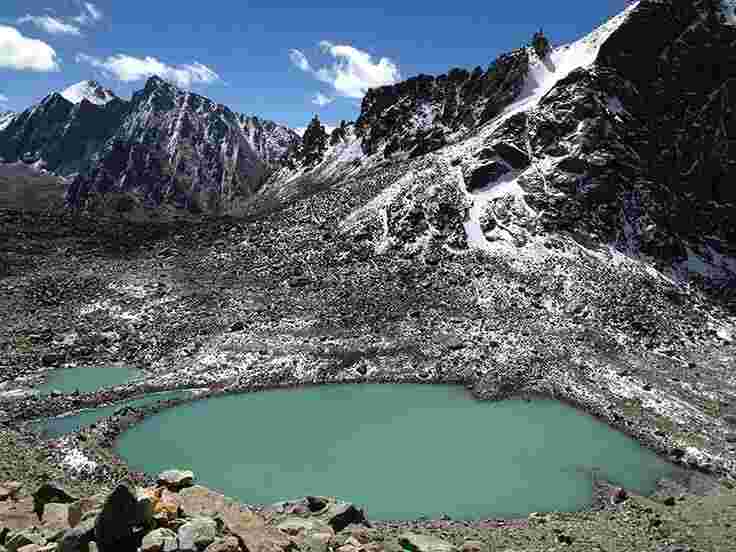
Kailash Mansarovar is a revered pilgrimage site located in Tibet, accessible from Nepal’s Sudurpashchim Province. It consists of two sacred sites: Mount Kailash, a peak considered holy in Hinduism, Buddhism, Jainism, and Bon, and Lake Mansarovar, believed to be the source of spiritual purity. The region is characterized by its rugged, high-altitude terrain and spiritual significance, drawing pilgrims and trekkers seeking both religious fulfillment and natural beauty.
Sudurpashchim Province, situated in the far western part of Nepal, is known for its diverse landscapes ranging from lush valleys to rugged mountains. It serves as a gateway to the remote and culturally rich regions of Nepal, including areas near Kailash Mansarovar. The province features natural attractions like the Mahakali River for rafting and scenic hill stations like Dadeldhura, along with vibrant cities such as Dhangadhi. Sudurpashchim provides access to some of Nepal’s most remote and spiritually significant destinations, blending adventure with cultural exploration.
Best Months to Visit
May to early September.
Winter (October to April).
Monsoon (July to August).
Open Days And Timing
Visiting Season:
- Best Time to Visit: The ideal time to visit Kailash Mansarovar is during the summer months from late May to early September. During this period, the weather is relatively mild, and travel conditions are more favorable.
Travel Period:
- Travel Window: The pilgrimage season typically runs from late May to September. During these months, the high-altitude passes and trails are more accessible due to less snow and stable weather conditions.
Travel Arrangements:
- Permits and Visa: To visit Kailash Mansarovar, you will need to arrange permits and visas through authorized agencies or tour operators. This includes the Tibet Travel Permit and other necessary documents.
- Tour Operators: Most visitors join organized tours that handle the logistics, including transportation, accommodation, and permits. These tours are usually scheduled within the peak travel season.
Local Conditions:
- Weather Considerations: Weather in the region can be unpredictable, with temperatures dropping significantly and snowfall occurring outside the summer months. It’s essential to be prepared for high-altitude conditions.
Travel Restrictions:
- Accessibility: The area is subject to travel restrictions and regulations, particularly due to its location in Tibet and its religious significance. Ensure you check the latest travel advisories and regulations before planning your visit.
Ticket
Travel Package Cost:
- Cost: Tours to Kailash Mansarovar generally cost between USD 3,000 to USD 6,000, depending on the tour operator, duration, and inclusions. This usually covers permits, visas, transportation, accommodation, and some meals.
- Inclusions: The package often includes guided tours, transportation from Nepal to Tibet, accommodation, and sometimes meals.
Near By Location
1. Mount Kailash:
- Distance: Directly adjacent to Kailash Mansarovar.
- Highlights: A sacred peak revered in Hinduism, Buddhism, Jainism, and Bon. The mountain is considered the center of the universe and is a major pilgrimage destination. The circumambulation trek around Mount Kailash is a significant spiritual journey for many visitors.
2. Lake Mansarovar:
- Distance: Located near Mount Kailash.
- Highlights: One of the holiest lakes in Tibet, believed to purify sins. It is surrounded by stunning landscapes and is a key part of the pilgrimage experience.
3. Zhangmu (Kodari):
- Distance: About 700 km (435 miles) from Kailash Mansarovar, accessible via Tibet.
- Highlights: A border town in Tibet with scenic views and a gateway to Nepal. It offers a glimpse into Tibetan culture and is a common transit point for travelers.
4. Shigatse:
- Distance: Around 500 km (310 miles) from Kailash Mansarovar, accessible via Tibet.
- Highlights: The second-largest city in Tibet, known for the Tashilhunpo Monastery, which houses the Panchen Lama. Shigatse offers cultural and historical insights into Tibetan Buddhism.
5. Lhasa:
- Distance: Approximately 1,000 km (620 miles) from Kailash Mansarovar, accessible via Tibet.
- Highlights: The capital of Tibet, known for its spiritual and historical landmarks, including the Potala Palace, Jokhang Temple, and various monasteries.
6. Saga:
- Distance: Around 300 km (186 miles) from Kailash Mansarovar.
- Highlights: A small town in Tibet, often used as a base for travelers heading to Kailash Mansarovar. It provides a glimpse into Tibetan rural life and offers basic amenities for travelers.
7. Pangong Lake (Tibet):
- Distance: About 400 km (250 miles) from Kailash Mansarovar, accessible via Tibet.
- Highlights: A stunning high-altitude lake known for its unique color and tranquil surroundings. It offers beautiful scenery and is a serene spot for reflection.
